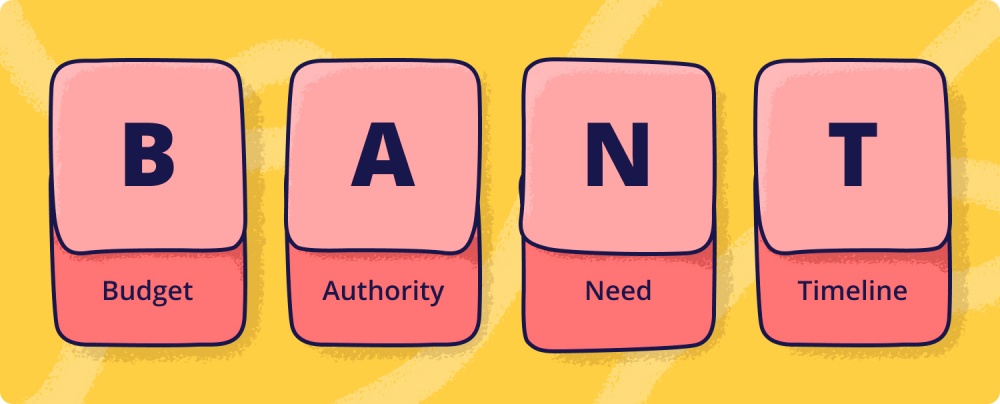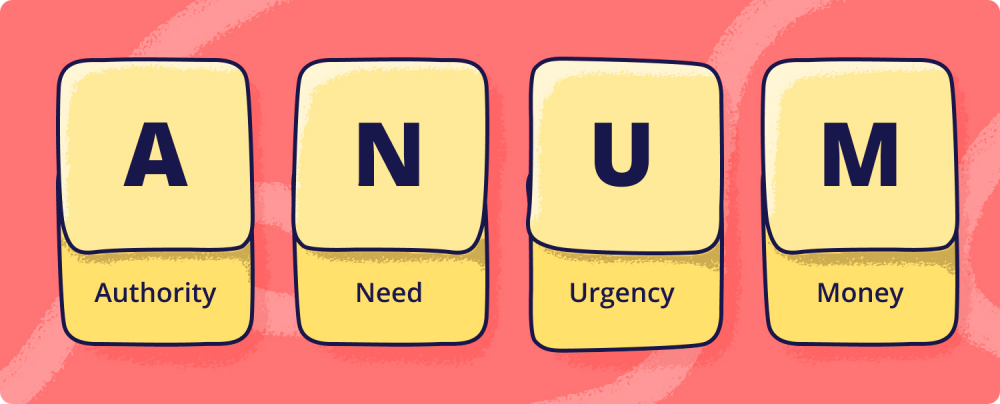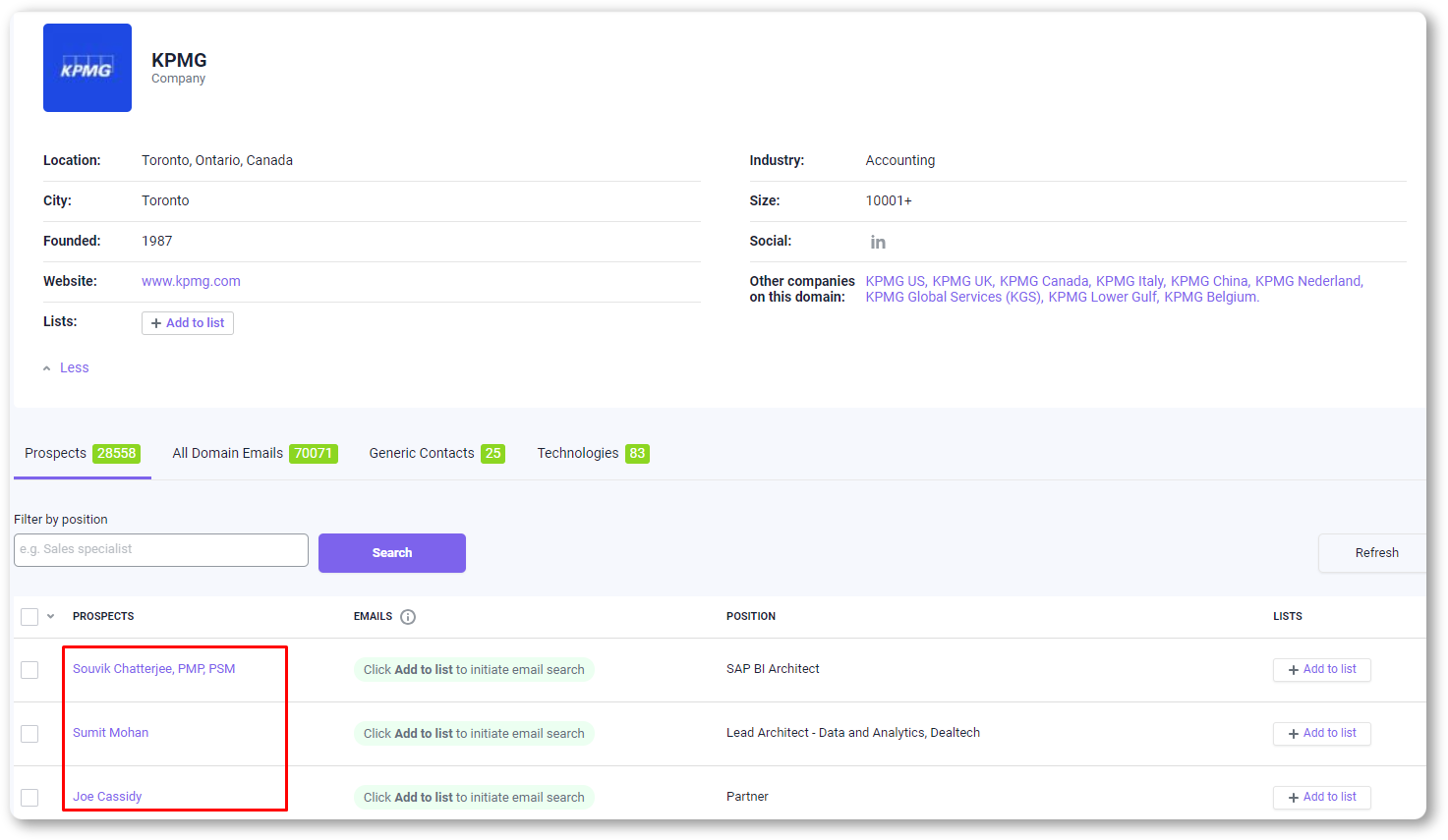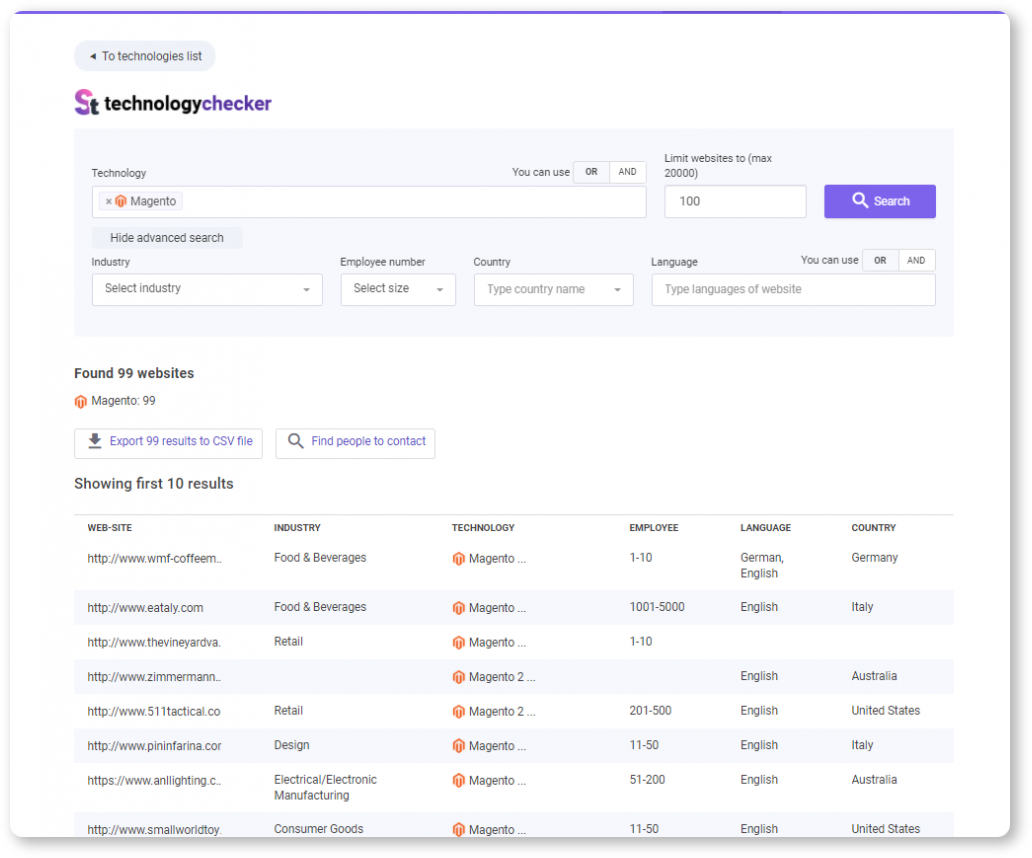Yesterday you needed to generate new leads, and it seems you’ve done a great job, but today comes a new problem — not all of your new leads fit your ideal customer profile. So you go on working hard to determine what lead can be defined as sales qualified, i.e., the one destined to become your customer. And it takes time.
In this post, we’ll tell you how to qualify leads step-by-step by using Snov.io, with less pain but more gain.
Outline:
What is lead qualification, and why do I need it?
Simply put, lead qualification is determining whether a lead is likely to become your customer. Within the sales cycle, the lead qualification stage comes after prospecting and lead generation.

Lead qualification is essential for successful sales, and here’s why:
It saves your time
By no means would you like to waste your time on people who are unlikely to buy your product or service, right? Lead qualification helps you find prospective customers and avoid ending up with dead-end leads.
|
💡 Pro-tip: To save more time, we recommend using email verifier while building your prospect list. It helps you ensure you send your email campaigns only to valid addresses. |
It helps boost close rate and revenue
The most significant value of lead qualification is that, in the long run, it helps you increase your closing ratio, which is logical — qualified leads are more inclined to purchase your offering. That naturally entails revenue growth, which is the key goal of any business.
It helps you with personalization
By qualifying your leads, you become aware of their buyer persona, better understand their wants and needs, and come up with a personalized approach, providing them with the relevant content, the one they are likely to resonate with. This will let you grow your profits by no less than 15%.
Lead qualification frameworks
When you approach the lead qualification stage, you’ll definitely feel like you need to ground your evaluations on some data about the lead. There are several lead qualification frameworks to use in this case. Let’s discuss the most effective ones.
BANT

This is probably the most popular lead qualification framework to start with as a sales rep. It’s based on 4 factors, hence the term:
- B=Budget
You should determine whether the prospecting company has the budget to afford your product or service. - A=Authority
Consider whether your lead is the person who’s involved in the decision-making process. A quality lead, in your case, will be a person among those who have the final word on the purchase. - N=Need
Need is a crucial factor in determining if the lead will actually buy your product or service. The desired result of lead qualification will be getting the prospect who obviously needs your solution but currently doesn’t have it. Or else, they may be cooperating with one of your competitors, whom your product can overperform. - T=Timeline
It’s not a secret that a B2B sales cycle length may last from 3 to 9 months depending on the deal size. You should understand how tight a prospect’s timeline is to determine what leads to contact first. Say, you should focus more on prospects who need to make a purchase within the nearest 3 months rather than those planning to consider your solution no earlier than in 8 months.
ChAMP

This framework includes the following 4 elements:
- Ch=Challenges
In the lead qualification process, you should focus on the challenges your lead is facing at the moment. - A=Authority
It’s similar to BANT and presupposes you should pick the prospect who will take the role in the decision-making process. - M=Money
Similar to the budget element from BANT, this factor is about the possibility of the lead to invest money into buying your solution. - P=Prioritization
In the CHAMP framework, a key factor is how urgent a prospect’s need is, i.e., whether the need to buy your solution is a top priority when compared to other company’s needs.
ANUM

This framework breaks down into 4 elements:
- A=Authority
You should find out whether the lead is a decision-maker. - N=Need
Get to your prospect’s needs and determine whether your solution can satisfy them. - U=Urgency
Find out whether the lead will likely make a decision soon, or it will be a long process. - M=Money
A company should have money to buy your product or service.
MEDDPICC

Created by David Weiss, an Enterprise Sales Leader, this is a more sophisticated framework that presupposes focusing on 8 factors:
- M=Metrics
Here, you should identify your solution’s economic benefits, which must be quantifiable, i.e., measured in numbers. - E=Economic buyer
The economic buyer is a crucial element for lead qualification as it is a person with the overall authority in the buying decision. - D=Decision criteria
From the prospect’s point of view, decision criteria are those factors that make your solution ideal for them to buy at the moment. For you, correspondingly, this means understanding what you need to do to be this ideal retailer or service provider. - D=Decision process
According to the MEDDPICC framework, understanding your prospect’s decision process will help you predict when you’ll be able to close a deal. - P=Paper process
In B2B sales, the paper process is a series of legal procedures leading to the endpoint where a seller gets the contract signed, and the buyer receives the approval to release funds for the investment and sign the seller’s contract. Make sure you know how the company’s paper process is organized, who stakeholders are, and what the timing to reach the agreement is. - I=Identify pain points
Your lead qualification process should be based on identifying the pain points of your leads. They should be actual, not just based on your general knowledge about the company. - C=Champions
A sales champion is a persona inside the company you are selling to who will advocate for you in front of decision-makers. Identify this ally of yours and be prepared to provide them with all the information about your solution they need. - C=Competition
It’s critical to draw the line between you and your competitors. During the lead qualification process, you should get information about your competitors from the lead and be particularly ethical not to cast them in a bad light.
GPCTBA/C&I

Developed by Hubspot, this framework is more complex and presupposes concentrating your lead qualification on 8 factors:
- G=Goals
You should find out your prospect’s current business goals and prioritize them. - P=Plans
Determine what your lead is planning to do to achieve their goals. - C=Challenges
It’s critical to identify prospects’ problematic points that you’ll further use to persuade them they need your solution. - T=Timeline
As with BANT, you should identify what leads are ready to buy from you in the nearest future and move those who aren’t down the list. - B=Budget
Similar to the preceding frameworks, make sure your lead can afford your product or service at the moment. - A=Authority
This factor helps you understand whether your lead participates in decision-making. - C&I= Consequences and Implications
At this stage, you should find out what happens if a prospect does nothing and what positive results the implementation of your solution will bring.
MINDA

If you analyze all of the above-mentioned lead qualification frameworks, you can see they include similar core elements.
MEDDPICC and GPCTBA/C&I help you get more vital information, but if you feel you need a confident and not very complex start in lead qualification, Snov.io has developed a simple yet effective framework juiced from other techniques — MINDA. It includes 5 elements:
- M=Money
It equals the budget element of the BANT framework and presupposes you evaluate your lead based on whether they have money to purchase your solution. - I=Interest
Find out whether your lead is interested in your product or service by analyzing their buying intent based on their activity on your website or research they’re doing on your solution. Besides, you may dig out whether they are interested by learning more about their current goals. - N=Need
Like BANT, MINDA positions understanding the real need of a lead as an important element. - D=Decision time
The time within which a lead makes purchase decisions is a key factor for lead qualification as it lets you understand what it takes you to bring your prospect to the purchase. - A=Authority
As with BANT, you need to determine whether a lead has a key role in decision-making.
Let’s take a look at the lead qualification process from the inside out. We’ll use the MINDA framework from Snov.io and go stage-by-stage explaining how to run lead qualification on your own based on the specifics of your business, your ideal customer profile, and your sales goals.
How to qualify leads step-by-step with Snov.io
We recommend that you break down lead qualification into three steps:
- Research
- Outreach
- Qualification itself

Step #1. Research
Lead qualification always starts with good research. There’s plenty of information you can find about your lead, namely:
General information about the lead
Learn about the company as much as you can: where it’s located, how many employees work there, its mission statement, or any problems they’re trying to solve.
You can easily do that with Snov.io Email Finder features. For example, with its Domain Search, you can get the information about the company location, founding date, industry, size, and the list of its employees.

You can further filter the list of employees by their position and get contacts of a decision-maker you are interested in.

And if you already have a qualified lead and wish to expand your prospect list with other companies that operate in the same industry or are located in a particular country/city, feel free to leverage Snov.io Database Search, specifying the industry and the country:

The tool will generate the list of companies based on the set parameters:

Click on the company you want to qualify as a lead and get general information about it, the list of its employees, a website where you can find out more about its mission and vision, and desired contact details.

As an option, you can also use Snov.io Technology Checker that enables you to find information about the companies that use the same tech as the lead you’ve already qualified for sales.

Lead funding information
Try to analyze a company’s current financial situation to understand whether this lead is worth dealing with. Say, if you see they’ve just got a huge round of funding, they are more likely to purchase your solution than a company experiencing financial difficulties for the last couple of years.
There are special services tailored to provide you with all the necessary data, such as Crunchbase or Angel.io.

Growth indicators
While researching a lead, pay attention to their growth indicators, both positive and negative.
Among the positive indicators are a company’s hiring activity, especially for leadership roles, product upgrades, new product launches, participation in growth business events, etc. Positive growth indicators are your green light to evaluate the lead as qualified.
On the contrary, you might notice some signs that will tell you this lead is unlikely to become a valuable prospect, such as layoffs, excessive redundancies, lack of funding, decreasing customer rates, and so on.
Step #2. Outreach
However you try, you won’t be able to find enough information about the lead without reaching out to them directly. At this stage of the lead qualification process, you should aim to collect specific data concerning their current situation on the market, needs, pain points, and plans for the future.
Cold email outreach
You can’t do without quality cold email outreach. The goal of your first email is to build connections and arrange the discovery call. Snov.io cold email software will help you launch a highly personalized cold email and send triggered follow-ups.
With it, you’ll be able to add custom variables to the subject line and message body, use different fonts, insert trackable links, and attach small files (up to 3MB).
Besides, you can test your email before sending it or save it as a template.

And if you feel like you need a bit of support in your first email, feel free to use this template from Snov.io:
|
Subject: Resource for [INDUSTRY/STRATEGY] questions Hi {{first_name:there}, I’d like to introduce myself as your resource here at [YOUR COMPANY NAME]. I work with companies in [LEAD’S INDUSTRY], and I noticed you were interested in [INDUSTRY SPECIFICATIONS: e.g., B2B lead generation]. This inspired me to spend a few minutes on [LEAD’S COMPANY] website to learn more about how you’re approaching [X STRATEGY: e.g., for customer service, sales, marketing]. I identified some areas of opportunity and decided to reach out to you directly. [YOUR COMPANY] is working with similar companies in [LEAD’S INDUSTRY]. We help them accomplish [GOALS] and give them the [TOOLS/SOLUTIONS] to succeed. Do you have 10 minutes to discuss [LEAD’S COMPANY] this week? If so, you can book time directly on my calendar here: [CALENDAR LINK] Looking forward to meeting, [YOUR NAME] |
Remember that 50% of all sales happen after the fifth contact, while most reps stop trying to reach prospects after just the second touchpoint. So if your lead is silent after your first email, it’s not a reason to give up. Do follow up!
Here’s a template from Snov.io to back you up:
|
Hello {{first_name:there}, I’m following up on my previous email with a free [TOOL/CONSULTATION/CASE STUDY] I think you’ll love. It’s a [FREE OFFER SUMMARY] I created just for you (literally, your name is on it) that will help you see all strategic opportunities within the arm’s reach. Let us talk this out so that I can answer any arising questions to give you a complete picture. I’m sharing my calendar [CALENDAR LINK], so we can schedule a convenient time to discuss. Enjoy your day, [YOUR NAME] |
Note: In Snov.io, you will find templates for different outreach campaigns. But remember, you should be using them as a kind of support and tailor your email outreach to each lead.
With Email Drip Campaigns, you can create a chain of follow-up emails based on whether your leads have opened your initial email or not and schedule them with needed frequency.

As soon as you receive a confirmative ‘Yes’ from the lead, it’s high time to have a discovery call.
Discovery call
Each discovery call presupposes asking your lead a list of sales qualifying questions, i.e., open-ended questions that help determine whether your lead fits your ideal customer profile.
To get some inspiration for the start, here’s a list of qualifying questions based on the MINDA sales qualification framework:
M=Money
- Could I ask you if you have a budget for this solution?
- What is your budget for this solution?
- Is [Price range] affordable for you to allocate for this solution?
- How much did you spend on similar solutions before?
- Would you be willing to try this solution if we offered you an annual billing discount?
I=Interest
- Do you currently have a solution in place?
- Have you considered such solutions before? What features were the highest priority?
- What does success with this solution look like to you?
- Which metrics would you use to evaluate the success of this solution?
N=Need
- What are your competitive strengths and weaknesses?
- One of the most common challenges I keep hearing about from companies like yours is [Challenge]. Is this an issue for you?
- What are your biggest challenges at the moment?
- What happens if you do nothing about the problem?
D=Decision time
- How long have you been facing this challenge?
- When you experienced a similar issue last time, how long did it take you to solve it?
- How urgent is solving your current issue?
- What do you think could accelerate your decision-making?
- In case you find the solution’s functionality suits you, what do you think the timeframe in your company is for making a purchase?
A=Authority
- Do you usually participate in making decisions about the purchase of similar solutions?
- Who usually makes final decisions as to whether a solution should be purchased?
- Is there anyone else in your company you need to include in our meeting?
- Who else should be involved in the discussion for your company to decide whether this solution must be considered now?
- Do you have to persuade your team to consider a solution that may bring value to your company’s growth?
Step #3. Qualification
Now that you’ve reached your sales leads with qualifying questions, you’ve got all the data to analyze which ones are worth qualifying as prospects and moving further down the sales funnel.
You can use two approaches for lead qualification:
Qualification indicator analysis
After you ask the lead a list of qualifying questions, you may come to the conclusion that this lead is either qualified or not based on the following indicators:
Qualified lead:
- Understands their needs and challenges
- Researches solutions to their problems
- Has a clearly defined budget to work with
- Understands how the buying process works
- Has a voice over buying decisions
Unqualified lead:
- Doesn’t seem to understand their real needs
- Continuously repeats they don’t need your solution
- Resists to make the next step in the sales process
- Doesn’t have enough budget to afford your solution
- Is interested only in price
Isn’t a decision-maker or doesn’t wish to bring decision-makers into the conversation.
Lead scoring
Alternatively, you can conduct a more precise qualification using lead scoring. This is a quantitative analysis that presupposes assigning different point values to each of the criteria within the chosen lead qualification framework. Let’s look at how to do it with MINDA.
After you ask qualifying questions that cover each element of the framework — money, interest, need, decision timeframe, authority — you give it from 1 to 5 points and count the sum. Here’s an example:
| Criteria | Scoring |
| Money | 5 points – budget is approved; 4 points – budget is expected to be approved; 3 points – budget is under discussion; 2 points – budget is meant for another project/solution, but the lead may allocate it for your solution; 1 point – no budget, at least for the next 12 months. |
| Interest | 5 points – strong interest; 4 points – moderate interest; 3 points – neutral position; 2 points – skeptical; 1 point – prefers another supplier. |
| Need | 5 points – strong need and requirements for your solution are clearly defined; 4 points – moderate need and most requirements for your solution are defined; 3 points – weak need and only some requirements for your solution are defined; 2 points – weak need and no requirements for your solution are defined; 1 point – no need. |
| Decision time | 5 points – the lead can make a decision in the next 3 months and is ready to meet with you now; 4 points – the lead can make a decision in the next 6 months and is ready to meet next month; 3 points – the lead can make a decision in the next 12 months and is ready to meet in 3 months; 2 points – the lead can make a decision in more than 12 months; 1 point – there’s no defined timeframe. |
| Authority | 5 points – the lead is the primary decision-maker; 4 points – the lead is a decision-maker though not the main one; 3 points – the lead has a recommending authority; 2 points – the lead has a minor authority; 1 point – the lead has no authority. |
Sum up all the points and get the lead qualification results:
20-25 points – The lead meets all the criteria for being qualified.
13-19 points – The lead is interested in your solution and is likely to become your customer. You may call this lead a warm lead and nurture them well to get them to purchase your solution.
7-12 points – The lead doesn’t display interest in your solution at the moment, but they may become qualified after a while;
5-6 points – The lead is unqualified, so you’d better not waste your time trying to sell to them.
How you can record it in your Snov.io account:
In your Prospects tab, there is an option to leave all necessary notes in a profile of your leads:

As soon as you’ve identified qualified leads, you can segment your prospect list accordingly:

A qualified prospect has gone through the lead qualification process and is now ready to be entered into the sales pipeline within Snov.io CRM:

Wrapping up
Lead qualification allows you to filter hundreds of leads and leave only those with the highest potential to become your customers. Successful lead qualification is about understanding your buyer profile, doing thorough research, choosing the right outreach strategy, and using the framework that will let you get the maximum information about the lead to infer whether their further nurturing is worthy of all your efforts.
And when it comes to the tool that will help you automate all these processes, Snov.io knows the art to do it well.






